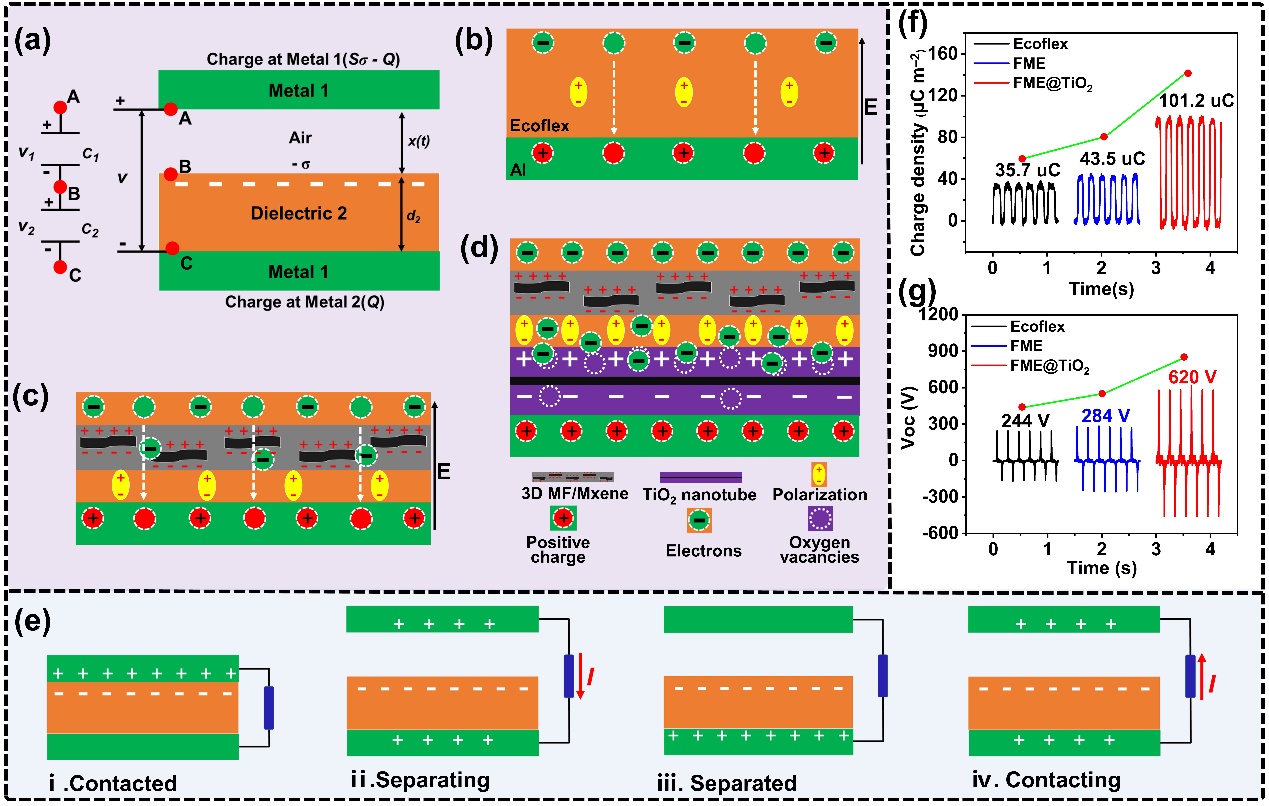Using Green Energy for Electrochemical Corrosion Protection
Metal corrosion seriously affects the service life of marine steel structures. Cathodic protection is an important method to extend the service life of metals. However, traditional cathodic protection needs great consumption of energy and metal resources, which exacerbates global energy problems and environmental crises. Therefore, it's imperative to develop green and cost-effective energy sources for corrosion protection.
Recently, the research team led by Prof. WANG Xiutong from the Institute of Oceanology of the Chinese Academy of Sciences (IOCAS) focused on triboelectric nanogenerators (TENGs) as a new energy conversion system.
The study was published in Nano Energy (IF: 19.069) on Mar. 13.
To promote the green process of electrochemical corrosion protection, melamine foam (MF) /MXene/Ecoflex@TiO2-TENG (FME@TiO2-TENG) was designed. In this study, the effects of MXene and TiO2 nanotubes on the charge transfer mechanism of the friction layer were investigated. The conductive properties and strong electronegativity of MXene play a positive role in the charge transfer of Ecoflex. At the same time, TiO2 nanotubes can capture the image charge. The combined action of the above two points improves the electrical output performance of TENG, which is conducive to the formation of better cathodic protection effect. In addition, this study realizes the evaluation of FME@TiO2-TENG cathodic protection effect with the help of micro-electrolytic cell system.
TENGs technology has the advantages of wide availability of materials, light weight, low cost and high efficiency of low-frequency energy conversion. "There are abundant mechanical energies available in the marine environment, such as wind energy, wave energy, tidal energy, etc., which provides a convenient energy source for corrosion protection using TENG," said NAN Youbo, first author of the study.
"This study demonstrates the potential of TENG as a green energy source for electrochemical cathodic protection, which would provide safety guarantee for the structures and equipment in marine environment," said Prof. WANG.
This study was supported by national Key Research and Development Plan of China, Key R&D Program of Shandong Province, China, MIITC High-tech Ship Research Projects, Shandong Key Laboratory of Corrosion Science, the Key Research Program of Frontier Sciences, Chinese Academy of Sciences.

Fig. 1 Synergistic mechanism of charge transfer and capture of composite dielectric and TENG output performance

Fig. 2 Application evaluation of FME@TiO2-TENG electrochemical corrosion protection
Youbo Nan, Xiutong Wang*, Hui Xu, Yan Wu, Hui Zhou, Yanan Sun, Teng Yu, Yanliang Huang. (2023). Synergistic effects of charge transport and trapping in tribomaterials for boosted triboelectric nanogenerators, Nano Energy, 110, 108345.
(Text by NAN Youbo)
Media Contact:
ZHANG Yiyi
Institute of Oceanology
E-mail: zhangyiyi@qdio.ac.cn
(Editor: ZHANG Yiyi)